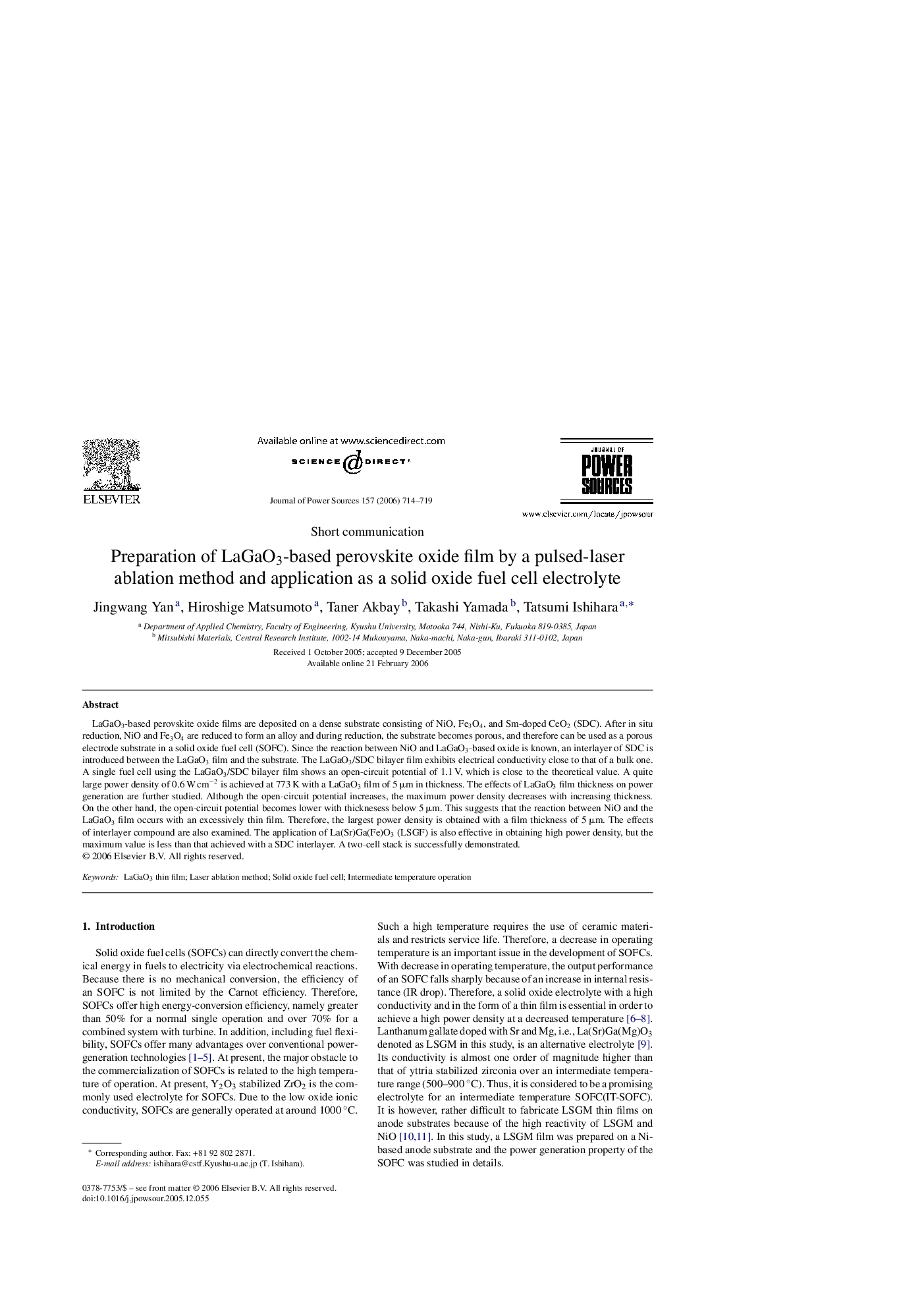| Article ID | Journal | Published Year | Pages | File Type |
|---|---|---|---|---|
| 1287751 | Journal of Power Sources | 2006 | 6 Pages |
LaGaO3-based perovskite oxide films are deposited on a dense substrate consisting of NiO, Fe3O4, and Sm-doped CeO2 (SDC). After in situ reduction, NiO and Fe3O4 are reduced to form an alloy and during reduction, the substrate becomes porous, and therefore can be used as a porous electrode substrate in a solid oxide fuel cell (SOFC). Since the reaction between NiO and LaGaO3-based oxide is known, an interlayer of SDC is introduced between the LaGaO3 film and the substrate. The LaGaO3/SDC bilayer film exhibits electrical conductivity close to that of a bulk one. A single fuel cell using the LaGaO3/SDC bilayer film shows an open-circuit potential of 1.1 V, which is close to the theoretical value. A quite large power density of 0.6 W cm−2 is achieved at 773 K with a LaGaO3 film of 5 μm in thickness. The effects of LaGaO3 film thickness on power generation are further studied. Although the open-circuit potential increases, the maximum power density decreases with increasing thickness. On the other hand, the open-circuit potential becomes lower with thicknesess below 5 μm. This suggests that the reaction between NiO and the LaGaO3 film occurs with an excessively thin film. Therefore, the largest power density is obtained with a film thickness of 5 μm. The effects of interlayer compound are also examined. The application of La(Sr)Ga(Fe)O3 (LSGF) is also effective in obtaining high power density, but the maximum value is less than that achieved with a SDC interlayer. A two-cell stack is successfully demonstrated.
